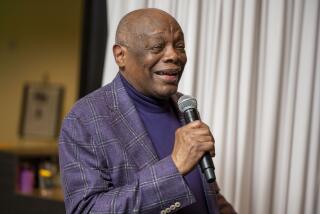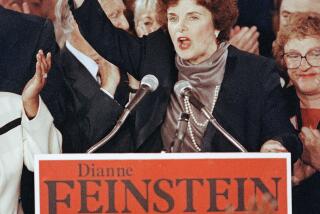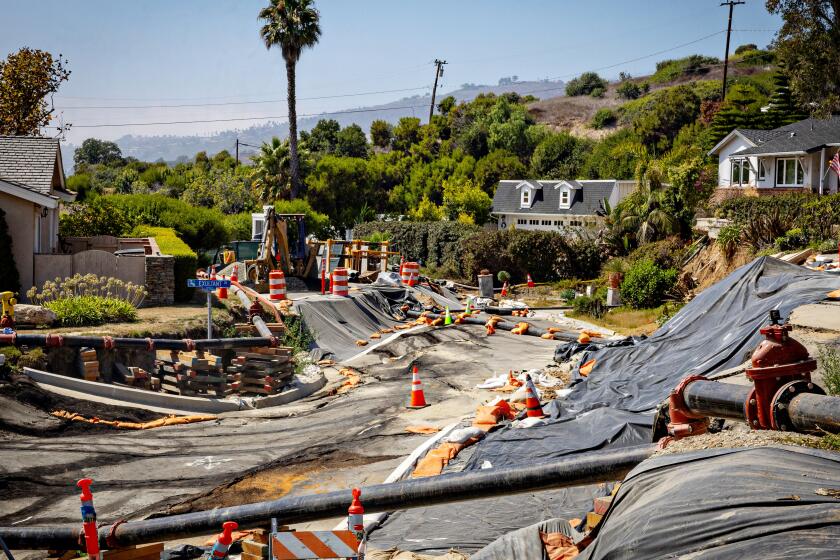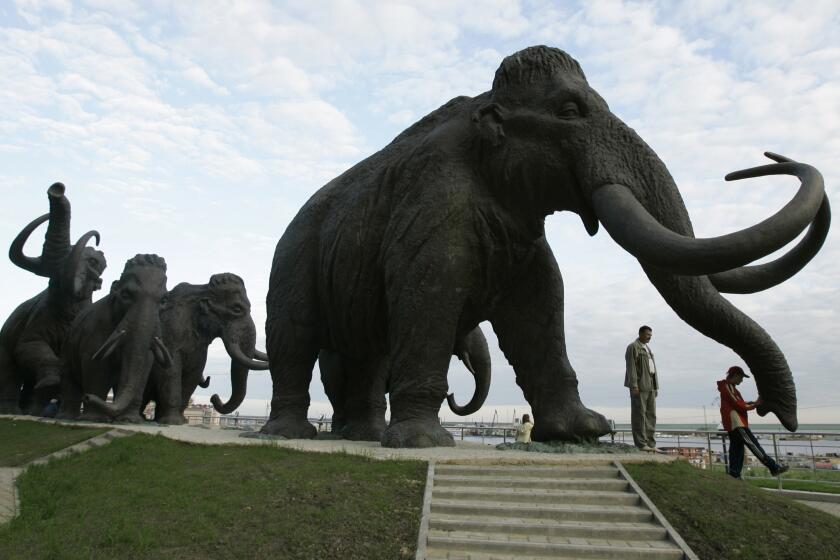Op-Ed: The disappearing Gov. Brown
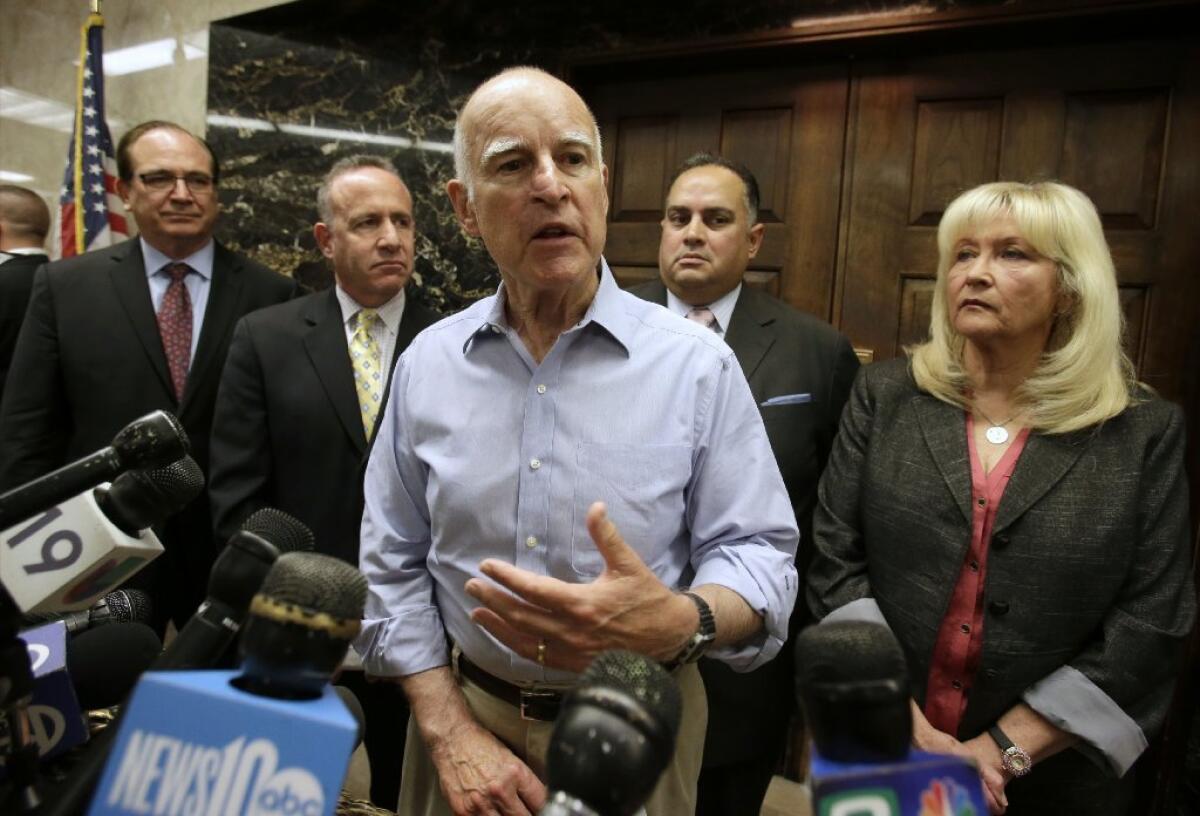
Has anyone seen the governor of California?
Four years ago, when Jerry Brown ran to succeed Hollywood-honed Arnold Schwarzenegger as governor, Brown’s lower profile and septuagenarian “get off my lawn” countenance appealed to voters searching for a more traditional and less theatrical leader. After he was elected, Brown dramatically reduced the size of the governor’s communications staff and cut back on the public events, press releases and interviews that most elected officials use to build support for their political and policy ambitions.
Brown’s behind-the-scenes approach to governance reached its apogee last year, when the governor announced that he would seek his fourth term by posting a letter on his campaign website. He campaigned infrequently in public for his reelection and spent more advertising dollars on behalf of two ballot initiatives he had sponsored than for his own candidacy. The result was an electorate with so little information at hand about the election that in late October, according to one statewide poll, more than 40% of likely voters did not know Brown was running for another term.
For the better part of half a century, the nature of political news coverage has required candidates of both parties to augment their policy pronouncements with ostentatious photo opportunities designed to visually reinforce their spoken or written message. The spectacle of our government’s most powerful and influential leaders posing with a steady stream of schoolchildren, farm animals, construction workers and firefighters has reached such a level of self-parody that even the candidates themselves frequently seem somewhat embarrassed by the ordeal.
But at a time when voters are turning away from mainstream news as their primary source for information, Brown especially has discarded the made-for-TV playbook and devoted less energy to these types of public appeals than any prominent politician in recent memory.
To be fair, Brown was elected to take on the state’s difficult policy challenges, not to engage the citizenry in fireside chats. Concentrating his persuasive powers on a limited group of legislators, lobbyists and specific stakeholders rather than California voters has not been an obstacle to his policy agenda: His primary budget, law enforcement, public education and environmental-protection priorities have all been largely accomplished. Nor has his low profile harmed him politically: Brown’s nearly 60% approval rating, from the October USC Dornsife/L.A.Times poll, puts him above any other statewide politician in California.
Given the steadily shrinking amount of coverage that California news media devote to state government, it’s an open question whether greater efforts on Brown’s part to attract their attention would have any material impact on his plans. But when voter participation and other measures of civic engagement are at historic lows, the governor’s low-key public profile also reminds us that there may be a broader benefit when citizens hear from their elected leaders on a regular basis. The ability and willingness of an elected official to inspire, motivate and mobilize a community represents the difference between an able administrator and a transformational leader. None of that happens without a conversation.
Since his reelection, Brown has left it to staff and advisors to outline his goals for the next four years. They affirmed his continued advocacy for high-speed rail and a new system for water conveyance. He also faces brewing battles over higher-education funding and government worker pensions. Brown might not need California voters to engage in these discussions, and he might not require their support to achieve his objectives. But the state’s residents would certainly benefit from hearing their governor’s thoughts on matters that so directly impact their lives.
Brown begins his fourth term in office Monday. California governors usually deliver both an inaugural address and a State of the State speech during the first week of a new term. He will instead combine the two speeches into one, meaning that these major opportunities for voters to hear their governor describe his plans for their future have been cut roughly in half.
On Tuesday, Brown travels to Fresno for a bullet-train ribbon-cutting event. It’s a small but encouraging step toward a more publicly engaged chief executive, one who should remember that a government for the people must more than occasionally make room for the people themselves.
Dan Schnur, who held senior communications positions on four California gubernatorial campaigns, is the director of the Jesse M. Unruh Institute of Politics at USC.
Follow the Opinion section on Twitter @latimesopinion
More to Read
A cure for the common opinion
Get thought-provoking perspectives with our weekly newsletter.
You may occasionally receive promotional content from the Los Angeles Times.
